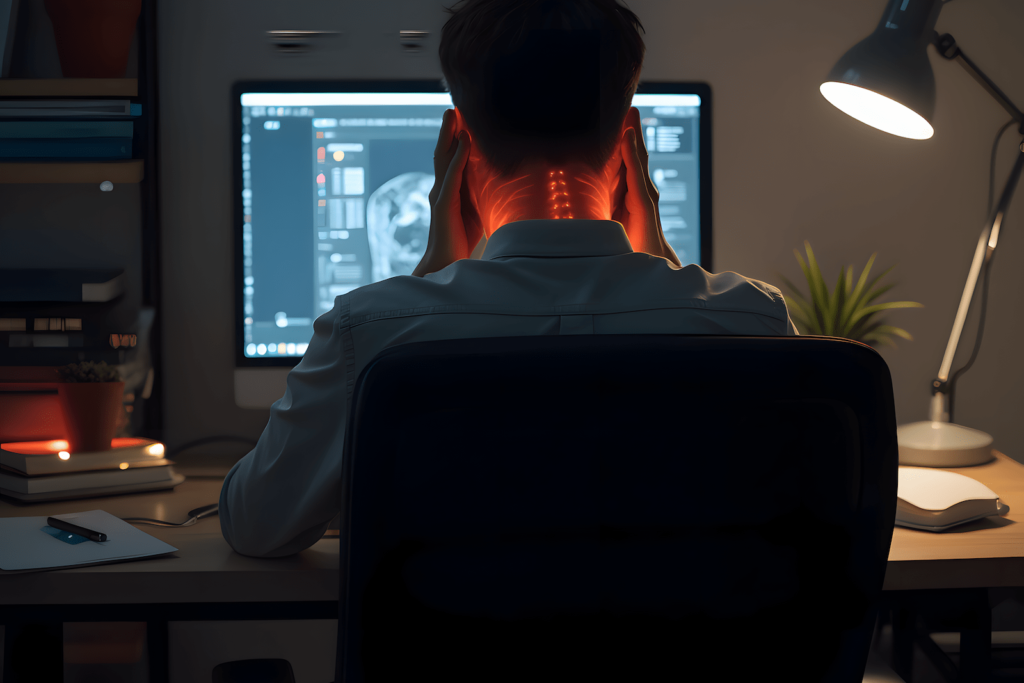
If your team is calling in sick more often, it might not be burnout. It might be signal fatigue: headaches, back tightness, screen blur. You can’t work if your head’s throbbing, your neck’s locked up, and your vision is fogged.
This isn’t about motivation. It’s about invisible strain stacking until it becomes visible failure.
Here’s What It Actually Looks Like
- You squint halfway through a video call and don’t notice
- You crane your neck toward the screen to “focus”
- Your upper back feels like a solid brick by 4 PM
- Your mouse shoulder starts throbbing from micro-tension
- You need a nap to kill the headache just to survive until 6
These aren’t isolated symptoms. They’re connected.
Why Remote Work Makes It Worse Offices used to force movement: walking between rooms, switching locations, natural lighting.
At home, everything is static. And static kills range.
You work in:
- Fixed chairs with no lumbar compensation
- Poor lighting that strains accommodation focus
- Zero schedule-based movement breaks
- Screens placed too high, too low, too far, too wide
The result? Micro-abuse loops. Tiny, repeated physical stress patterns that build day over day.
The Feedback Loop Problem You start adapting to the pain:
- You hunch forward = more neck load
- You dim the screen = more eye strain
- You stop moving = more inflammation
And the worst part? You normalize it.
You think:
“That’s just remote work. That’s just how I feel now.”
That thought is the signal that your loop is breaking you.
Fixing It Isn’t Fancy. It’s Friction Reduction. You don’t need a Peloton. You need:
- A proper chair with adjustable lumbar + armrests (not a gaming chair)
- Monitor positioning: top third of screen at eye level, 20–28 inches away
- Lighting control: natural light if possible, plus backlight or desk lamp to soften contrast
- Micro-movements: shoulder rolls, head rotations, 90-second standups every hour
- Eye strain interrupts: 20-20-20 rule (every 20 mins, look 20 ft away for 20 seconds)
Build a Sick Leave Reduction System This isn’t self-care. It’s operational uptime.
Track this in your team:
- Absence trends: Is it always the same people?
- Ergonomic setup audit: Do they even have a real chair?
- Lighting + camera stress: Are people working in visual caves?
Fix the gear, fix the schedule, fix the signals.
You can’t expect high performance from people operating under chronic tension.
Your body holds stress where it leaks — shoulders, spine, neck. I’ve found magnesium and a solid B-complex help reduce twitchy tension before ergonomic fixes even matter.
Use These as Tactical References:
- Your Home Office Is a Control Room
- 5 Desk Add-Ons That Fix Remote Burnout Without Changing Jobs
- Clean Signal, Clean Mind
- Fix Your Sleep Cave
Pain isn’t random. It’s feedback.
If your head hurts, your eyes burn, or your spine feels like concrete, that’s not a sign to push through. It’s a sign to debug your physical loop.
Fix the system. The body will follow.
